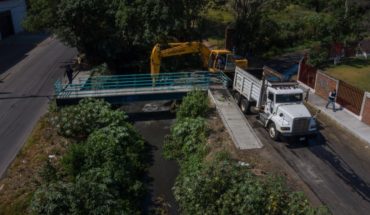recently the public agenda of MINSAL is It has deployed environment to the Digital Hospital initiative that has arisen as a health policy relevance. But the facts say otherwise: the difference between what is done in almost all regions and the so-called Digital Hospital, lies at only two points. On the one hand, the hardware of the tele – better connection, support update better screens – and centralize on the other hand, the tele-atenciones, which are currently resolved in local networks of health, in Santiago. None of the points could be called individually or together, a public health policy.
The project of Hospital Digital of the Minister Santelices which according to the holder of the portfolio of health, aims to change the face of Chile’s public health has thirty-one billion pesos assigned.
In particular, this initiative aims to address 4-axis attention: evaluation by specialists via telemedicine consultations in primary care by general practitioners in places where medical professionals available – via telemedicine-, no control of chronic with monitoring at home and using case management tab electronic clinic.
The benefits of using telecommunications technology to expand and optimize the health coverage, in a country with the geographical characteristics of our own, are undeniable. So much so, that they are part of the work of the health workers since the beginning of the rural health in Chile.
As an example of the above, it is good to look at the experience of the Aysén region, as a paradigm of a health network that is in charge of a population with a great geographic dispersion (more than 1 km2 per capita) and a high index of rurality. Nine of their ten communes are considered rural and according to OECD data, 44% of its population lives in rural life condition.
The network of the Aysén region has, among other health centres, with 28 rural health BBS. Between 2014 and 2018, as part of the expansion of the medical health human resource policy, general practitioners were 14 of these posts. Many of these compatriots were able for the first time in their lives sharing their health problems with a doctor and obtain a solution in your place of residence. People of the other 14 BBS remain relegated, being served by technicians in nursing as first contact (similar to the current ministerial project) to then be evaluated by Tele-assistance by a doctor or medical on duty, either in the Center control of the regional capital, or at one of 3 low complexity hospitals in the territory.
These low complexity hospitals, already resolved many of the attentions of secondary level using assessments by specialist distance, reducing the expense of pocket and saving its prolonged users travel to the Regional Hospital. Thus, resolve some years dermatological care, assessments pre anesthetic, indications of general surgery, controls with neurologists, internists, pediatricians and orthopedic surgeons among others. All this, without using a weight of the budget of the Digital Hospital of the Minister Santelices.
Thinking that the sanitary gaps in the system, affecting millions of Chileans and Chile serving in the public health network, are resolved with better computers and centralizing the attentions in Santiago, we underestimate the magnitude of the problem. Digital Hospital does not improve anything the gap of general practitioners and specialist needed in the public health network, offering a patch to a Chilean health system that requires urgent and real solutions.
Can be improved computers, screens and broadband contract, but the fundamental thing is to increase the provision of doctors in rural areas. It in 200 jobs – an increase of 40% of the annual supply of charges – would have an approximate cost of 6000 million pesos a year, away from the 31 billion that costs this little framed and innovative government project.
Minister Santelices, I suggest occupy 20% of the resources allocated for this project to improve seriously, the health coverage of millions of compatriots scattered throughout our long and narrow. Less hardware, more software.
The content poured into this op-ed is the sole responsibility of its author, and does not necessarily reflect the editorial line nor the counter position.





